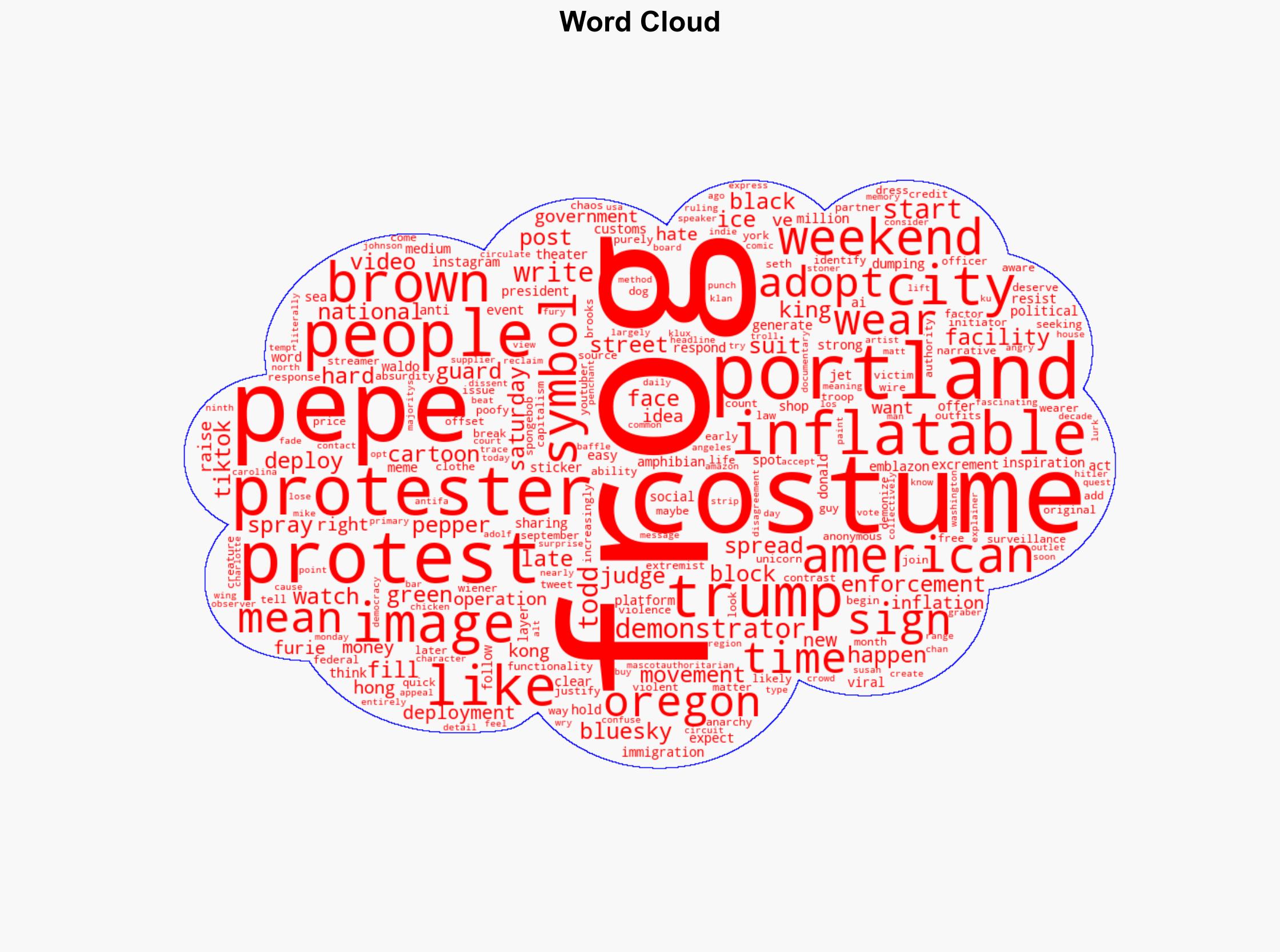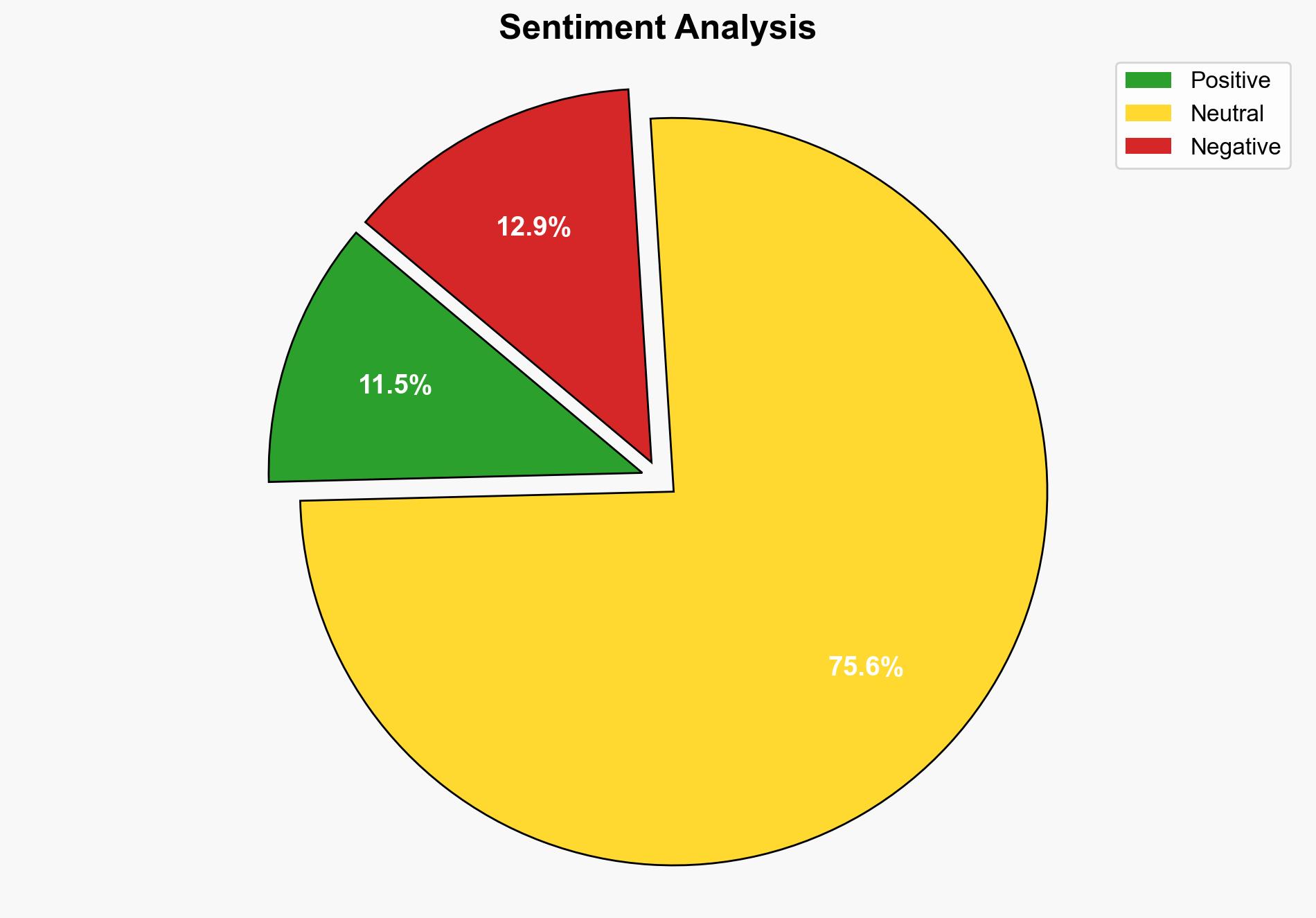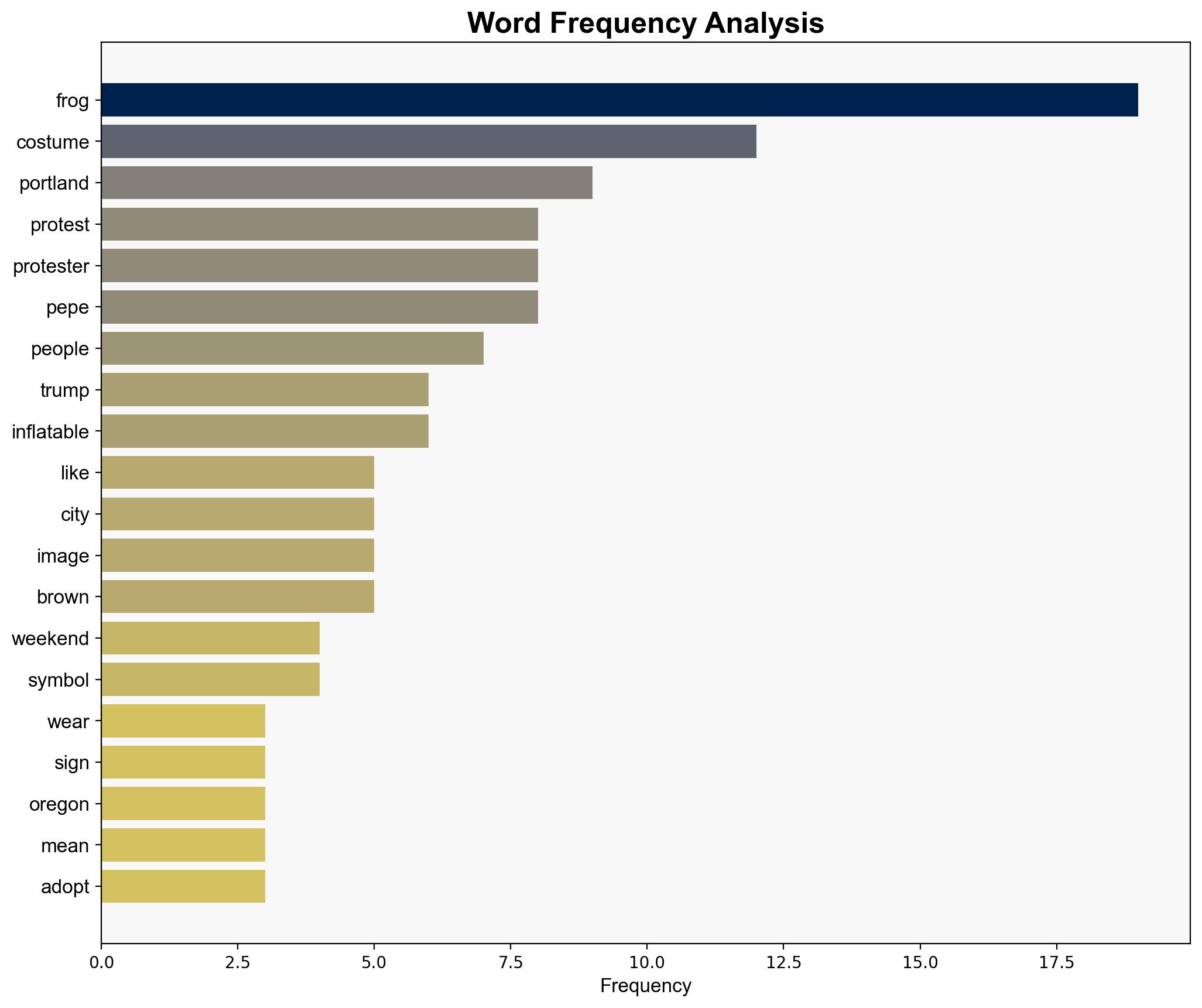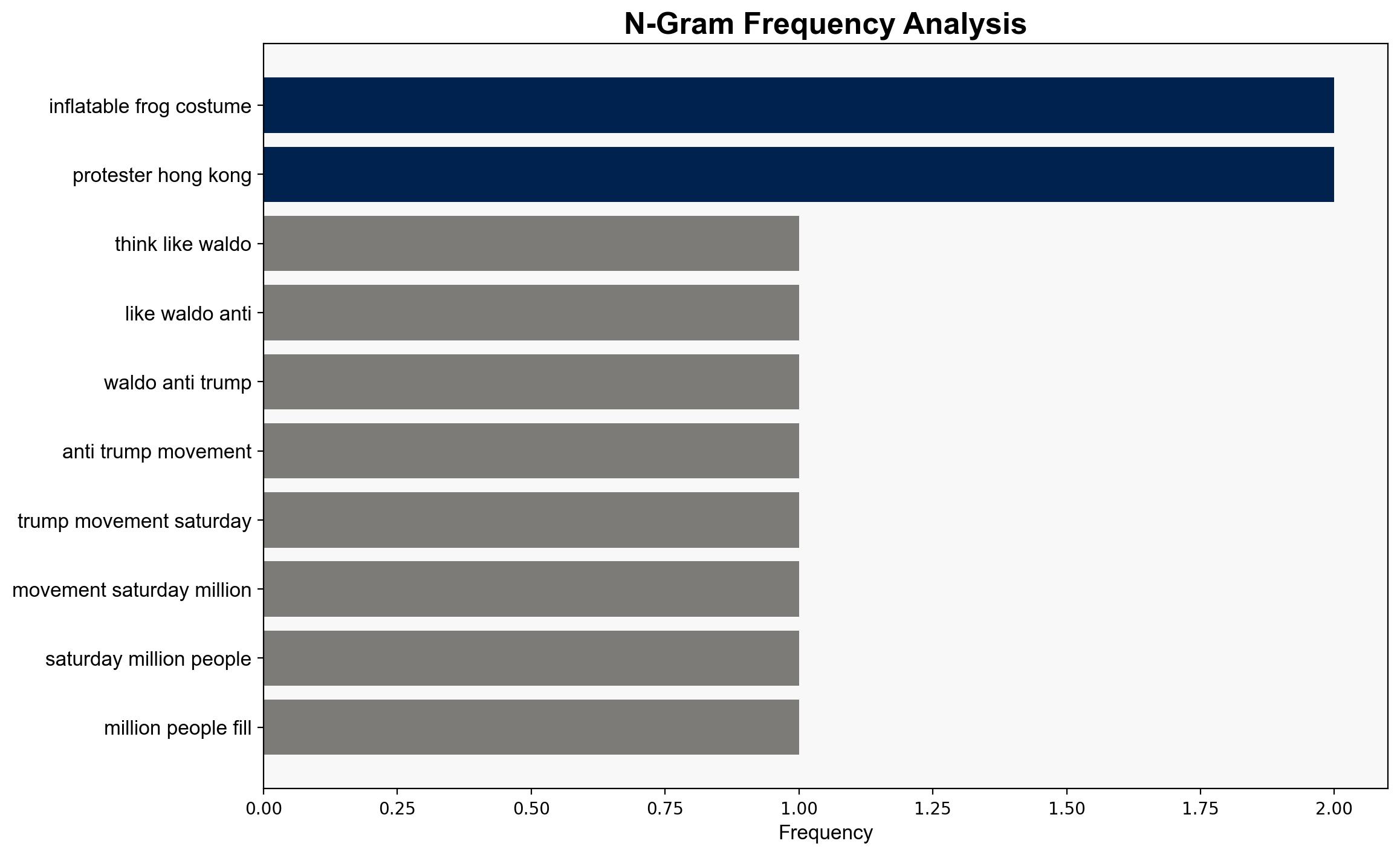The Long History of Frogs as Protest Symbols – Wired
Published on: 2025-10-21
Intelligence Report: The Long History of Frogs as Protest Symbols – Wired
1. BLUF (Bottom Line Up Front)
The resurgence of frog imagery in protests, notably in Portland, reflects a strategic shift towards anonymity and symbolic resistance. The most supported hypothesis is that the use of frog costumes is primarily a tactic to obscure identities and diffuse violent narratives associated with protests. Confidence level: Moderate. Recommended action: Monitor the evolution of protest symbols and assess their impact on public perception and law enforcement strategies.
2. Competing Hypotheses
1. **Hypothesis A**: The use of frog imagery in protests is a strategic move to obscure identities and reduce the likelihood of violent confrontations. This aligns with the narrative that protesters are aiming to counteract negative portrayals and avoid surveillance.
2. **Hypothesis B**: The frog imagery is primarily a cultural reclamation effort, aiming to detach the symbol from its past associations with hate groups and reframe it as a symbol of peaceful resistance.
Using ACH 2.0, Hypothesis A is better supported due to the emphasis on anonymity and the tactical advantage of obscuring identities in protest settings, as highlighted by the use of costumes to avoid identification by authorities.
3. Key Assumptions and Red Flags
– **Assumptions**: It is assumed that the primary motivation for using frog imagery is anonymity and not cultural reclamation. It is also assumed that the imagery effectively reduces violence and negative portrayals.
– **Red Flags**: The lack of direct evidence linking the use of costumes to a decrease in violence or surveillance effectiveness. Potential cognitive bias in interpreting the resurgence of frog imagery as purely strategic rather than cultural.
– **Inconsistent Data**: The narrative does not fully explore the potential for dual motivations (both strategic and cultural) behind the use of frog imagery.
4. Implications and Strategic Risks
– **Patterns**: The use of symbolic imagery in protests is a recurring theme, indicating a broader trend of symbolic resistance in social movements.
– **Cascading Threats**: If the tactic proves effective, it may lead to increased use of similar strategies in other protests, complicating law enforcement efforts.
– **Potential Escalation**: Misinterpretation of the imagery by authorities or opposing groups could lead to unintended confrontations.
– **Economic and Psychological Dimensions**: The commercialization of protest symbols (e.g., selling costumes) could dilute their impact and lead to public desensitization.
5. Recommendations and Outlook
- Monitor social media platforms for emerging protest symbols and narratives to anticipate shifts in protest tactics.
- Engage with community leaders to understand the motivations behind protest symbols and address potential misunderstandings.
- Scenario Projections:
- **Best Case**: Symbols are reclaimed for peaceful protest, reducing violence and increasing public support.
- **Worst Case**: Misinterpretations lead to escalated confrontations and increased surveillance measures.
- **Most Likely**: Continued use of symbols with mixed outcomes in terms of public perception and law enforcement response.
6. Key Individuals and Entities
– Seth Todd: Associated with the initial frog costume idea.
– Brooks Brown: Initiator of “Operation Inflation,” promoting the use of inflatable costumes.
– Matt Furie: Creator of the original Pepe the Frog character.
7. Thematic Tags
national security threats, protest dynamics, symbolic resistance, social media influence





